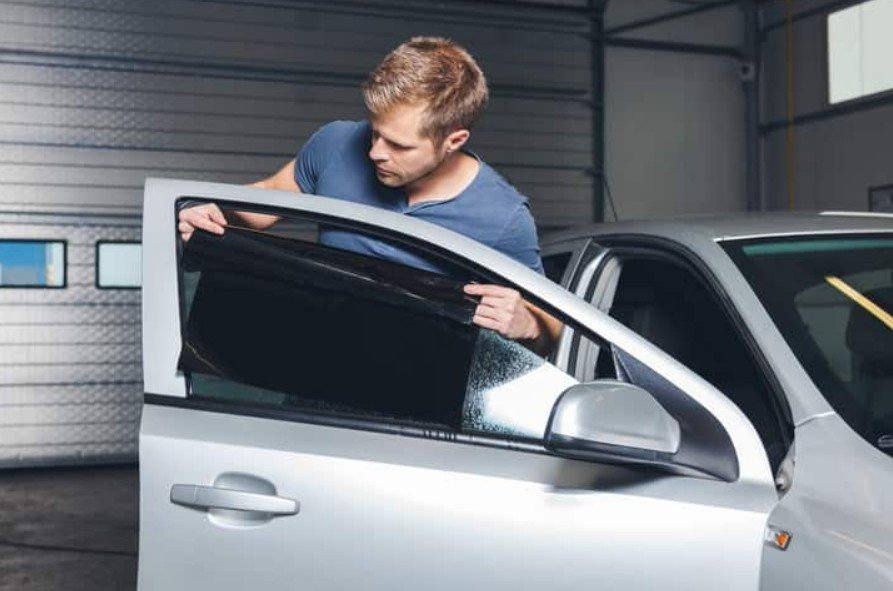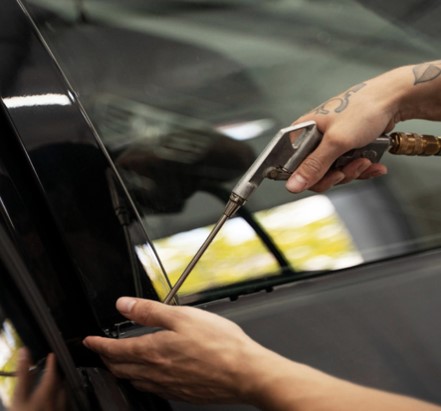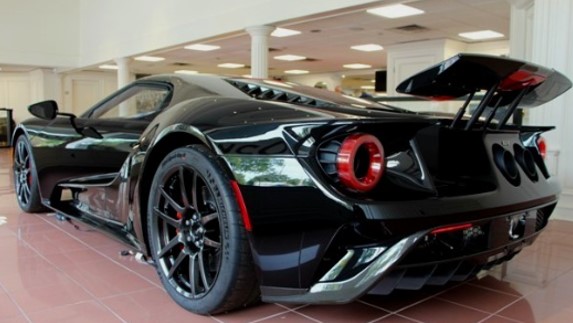Window Film & Window Tint for Your Car: A Real Driver’s Guide

I’ll be honest—I didn’t give car window tinting much thought when I first bought my old sedan. I figured it was just for people who wanted to make their cars look “cool” or hide from the sun. But then, one summer, after nearly melting inside my car after work, I realized there’s way more to window film than just style.
Over the years, I’ve tried different types of tint, made a couple mistakes (yes, I once bought the cheap DIY kit from the auto store… never again), and learned what actually matters when it comes to window film. This isn’t just about vanity—it’s about comfort, safety, and even protecting the money you’ve invested in your car.
Let’s dive in.
Why Even Bother with Window Tint?
If you live somewhere hot, you already know the pain of opening your car door and getting blasted by oven-like air. Window film reduces heat by blocking infrared rays, and honestly, it makes a night-and-day difference. The first time I got a professional tint, I noticed my AC didn’t have to work nearly as hard. My car cooled faster, and I wasn’t sweating through my shirt on a 20-minute drive.
It’s not just heat, though. Tint helps with:
- UV protection: Some films block up to 99% of UV rays. That’s not just protecting your skin but also preventing your leather seats or dashboard from cracking.
- Privacy: I’ve had people peer into my car at red lights before—super awkward. Tint fixes that.
- Glare reduction: I do a lot of early morning drives, and sun glare used to make me squint constantly. With tint, it’s noticeably easier on the eyes.
- Looks: Let’s be honest—it just makes a car look sharper. Even an older model looks fresher with a good tint.
My First Mistake: DIY Window Tint Kits
Here’s the deal: I thought I was saving money by buying a $30 DIY kit. Spoiler alert: it turned into hours of frustration and bubbles under the film that looked like a bad science experiment.
The instructions made it sound easy—just clean the glass, spray the solution, apply the film, squeegee out bubbles. But no one tells you how unforgiving it is if you misalign even by half an inch. I ended up with edges that peeled within a week and creases that made the back window look warped.
Lesson learned: if you’re new to tinting, don’t DIY unless you’re very patient and skilled with precision work. Professional installers use heat guns and have tricks to get a smooth finish.
Choosing the Right Type of Window Film
There isn’t just one “tint.” Over the years, I’ve learned that window film comes in different materials and price points. Here’s the quick breakdown:
- Dyed Film – Cheapest option. Basically just dyed polyester. It looks dark but doesn’t block heat very well. I had this on my first car, and honestly, it faded within two years.
- Metalized Film – Stronger, blocks heat better, and gives a shiny finish. But… it messed with my radio signals. If you rely on GPS or cell service, this might not be the best pick.
- Carbon Film – A solid middle ground. Matte finish (which I liked), durable, and blocks more heat than dyed film without signal interference.
- Ceramic Film – The top dog. This stuff blocks UV and infrared heat while staying clear. My current car has ceramic tint, and I’ll never go back. Even in brutal summer heat, the cabin doesn’t feel like a sauna.
Yes, ceramic is pricier—sometimes double the cost—but it’s worth it long-term.
How Dark Should You Go?
This was another mistake I made early on. I wanted my windows pitch-black because it looked cool. The problem? At night, I couldn’t see much when backing out of a dimly lit driveway.
Different states (and countries) have laws about how dark you can tint your windows. It’s measured in VLT% (Visible Light Transmission). A 35% tint means 35% of visible light passes through, so lower numbers = darker tint.
For example:
- 70% VLT = very light, almost clear
- 35% VLT = medium tint, common for side windows
- 20% VLT = dark, lots of privacy
- 5% VLT = limo tint (super dark, often illegal for front windows)
Tip: Check your local tint laws before getting it done. Nothing worse than spending money on tint and then getting fined or being forced to remove it.
The Cost of Window Tinting
Here’s what I’ve paid in the past:
- DIY kit: $30–$80 (but not worth it in my experience)
- Basic dyed tint (pro install): $150–$200 for a sedan
- Carbon film: $250–$350
- Ceramic tint: $400–$800 depending on car size and brand
Yes, ceramic stings the wallet, but I noticed my gas mileage improved slightly because I wasn’t blasting the AC as much. Plus, it’s a one-time expense that lasts years.
Maintenance Tips I Learned the Hard Way
After getting tint, I thought I was done. Wrong. I accidentally rolled down my window two days after the install, and the film peeled right at the edge. Rookie move.
Here’s what I now do:
- Wait at least 3–5 days before rolling down windows. Let it cure.
- Use ammonia-free cleaner. Windex with ammonia will ruin your tint. I use a vinegar-water mix instead.
- Microfiber cloth only. Paper towels scratched mine once—tiny but noticeable.
- Be gentle with edges. Don’t scrape ice with a sharp tool inside your car.
The Hidden Benefit: Resale Value
Funny enough, when I sold my last car, the buyer actually complimented the tint. He said it looked clean, had no bubbles, and helped seal the deal. Never thought tint would make a difference in resale, but apparently, people notice when it’s done right.
Should You Tint the Windshield?
This one’s tricky. Full dark tint on a windshield is illegal almost everywhere, but you can get a ceramic clear film. It looks invisible but still blocks UV and heat. I tried it once, and it made driving midday so much more comfortable.
If you live somewhere scorching, this is worth considering. Just make sure it’s the legal kind (transparent with high VLT).
When Not to Tint
Here’s something nobody tells you: tint isn’t always a good idea. If you drive a lot at night in rural areas with no streetlights, dark tint can be more dangerous than helpful. I drove a country road once with 20% tint, and it was honestly nerve-wracking.
Another time, I rented a car without tint and realized in colder climates, you don’t always need it. If anything, it can make winter mornings worse since the sun helps warm the cabin.
My Final Verdict
If I could go back, I’d skip the cheap DIY kits and go straight to professional ceramic film. It’s an upfront cost, but the comfort, safety, and long-term value are unmatched.
If you’re thinking about it, here’s my simple advice:
- Check your local laws first.
- Don’t go too dark if you drive at night.
- Invest in quality—ceramic is worth it.
- Take care of it, especially during the first week.
At the end of the day, tinting is one of those upgrades you don’t fully appreciate until you’ve lived with it. Then, when you sit in an untinted car again, you’ll wonder how you ever survived without it.
Frequently Asked Questions About Car Window Film & Tint
- Is ceramic window tint worth the price?
Yes, ceramic tint is absolutely worth it if you plan to keep your car for several years. Unlike dyed or metalized film, ceramic blocks both UV rays and infrared heat without interfering with signals like GPS or radio. I switched to ceramic on my current car, and the difference was noticeable the first week—less heat, clearer visibility, and zero fading. While it costs more upfront, it saves you money on air conditioning use and protects your interior from cracking or fading.
- How long does car window tint last?
It depends on the type of film and quality of installation. Dyed tint may last 2–3 years before it starts bubbling or fading. Carbon film often holds up for 5+ years, while ceramic tint can last 10 years or more with proper care. I had ceramic tint on my old SUV for nearly 8 years, and it still looked fresh when I sold it. Maintenance—like avoiding ammonia-based cleaners—makes a huge difference in longevity.
- Can I roll down my windows after tinting?
Not right away. Most professional installers recommend waiting 3 to 5 days before rolling down your windows. This gives the adhesive enough time to cure. I learned the hard way once by rolling mine down too soon—it caused peeling along the edge, and I had to get it re-done. Trust me, the short wait is worth it.
- Will car window tint reduce visibility at night?
Yes, darker tints can reduce night visibility. A 20% VLT or darker tint might make backing out of unlit driveways or driving on country roads difficult. If you drive a lot at night, consider sticking to a 35% tint or lighter. On my first car, I went too dark, and it was a nightmare on rural highways. Balance privacy with safety.
- Does window tint affect car insurance?
In most cases, tint itself doesn’t directly raise your insurance. But, if you install a film that’s illegal in your state, you could face fines or even issues if you’re involved in an accident. Some insurers may not cover damages if your car isn’t compliant with local tint laws. That’s why I always double-check regulations before tinting a new vehicle.
- Can I wash my car after getting window tint?
Yes, but only after the film has fully cured—usually a week. Washing the exterior is fine since the tint is applied on the inside of the glass. But be gentle with the inside windows: no scraping tools, no ammonia cleaners, and always use a soft microfiber cloth. I use a mix of water and vinegar—it’s safe, cheap, and keeps the tint spotless.
- How much does professional car window tinting cost?
Costs vary depending on the film type and vehicle size. For a standard sedan, expect:
- Dyed tint: $150–$200
- Carbon film: $250–$350
- Ceramic tint: $400–$800
SUVs and larger vehicles cost more. I once paid $600 for a full ceramic job on my SUV, but honestly, it paid off in comfort and protection.
- Does window tint really block heat?
Yes—if you choose the right kind. Dyed films don’t block much heat, but ceramic and carbon films significantly reduce infrared rays, keeping the cabin cooler. In my experience, ceramic tint dropped my car’s interior temperature by about 10–15 degrees on hot summer days, which meant I didn’t have to blast the AC nonstop.
- Can window tint be removed?
Absolutely. Professional shops use steam or special chemicals to remove old film without damaging the glass. I once tried peeling it off myself, and it left behind sticky residue that took forever to clean. If your tint is bubbling, fading, or just outdated, it’s worth paying a shop to remove it cleanly.
- Is windshield tint legal?
Dark windshield tint is usually illegal, but you can install a clear ceramic film. This type is almost invisible but still blocks heat and UV rays. I added a clear windshield film a few years ago, and it made my daily commute way more comfortable without attracting any police attention. Always check your local laws before adding any tint to the windshield.
Final Thoughts
Window film and tinting your car isn’t just about looks—it’s about comfort, safety, and long-term value. Whether you go with a budget-friendly dyed film or splurge on ceramic, the key is making sure it’s professionally installed and compliant with your local laws.
From personal experience, I can say: once you’ve driven with a properly tinted car, it’s hard to go back.







